1, the speaker and power amplifier configuration is not reasonable
The output power of the power amplifier is too large, causing damage to the tweeter, but it is not. In professional situations, the speaker can generally withstand three times the rated power of the large signal impact, instantaneously can withstand 5 times the rated power peak impact without problems. Therefore, it is not the case that the power amplifier has a large power and the tweeter is burned due to an unexpected strong impact or a long whistle of the microphone, and the case where the tweeter is burned is extremely rare.

As we all know, there are multiple speakers in the speaker, and the power that the speaker is subjected to is divided according to the frequency division point.
The rated power of the speaker, the general professional speaker indicates the maximum pink noise power, that is, the rated power of the speaker refers to the pink signal or the analog signal power that the broadband can withstand. A two-way speaker with a crossover point of 1.6 kHz and a rated power of 100 W, the woofer can be assigned to an output power of 78 W at rated power, while the tweeter is only assigned to 22 W. Therefore, applying 100W of pink noise power or normal program signal power to the speaker can withstand it; when using a 100W single-frequency signal to test, both the treble and the woofer may be damaged. If a three-way speaker, the middle and high-pitched crossover point is 4kHz, then the tweeter's power is only 5% of the nominal power. If the power is not properly distributed, it will easily cause damage to the tweeter.
Under normal circumstances, if the signal input to the speaker is doubled, the power of the tweeter is only increased by 5W; but if the power of the power amplifier is insufficient, the signal overload will be cut, and the higher harmonic components will increase sharply. Originally a 1 kHz sinusoidal signal, when the amplitude of the overload is close to a square wave, a large number of odd harmonics, such as 3 kHz, 5 kHz, etc., are generated outside the 1 kHz sine wave, so that the proportion of the high-pitched component in the signal This is greatly increased, which in turn causes the high-audio spectral energy in the signal to far exceed the power that the tweeter can withstand. Even if the total power of the signal at this time has not reached the rated power of the speaker, the tweeter has been overloaded and damaged. This situation is overloaded for a short period of time, but it is more dangerous without clipping. When the signal is not distorted, the short-time overloaded 1 kHz signal, the power energy falls on the woofer with higher power, does not necessarily exceed the short-term maximum power of the speaker, and generally does not cause the deviation of the power distribution of the speaker and damages the speaker unit. Therefore, under normal use conditions, the rated output power of the power amplifier should be 2-3 times of the rated power of the speaker to ensure that the power amplifier does not cause distortion at the maximum power of the speaker.
2, the frequency divider is not used properly
Improper use of the crossover point at the input or an unreasonable operating frequency range of the speaker is also a cause of damage to the tweeter. When using the crossover, the crossover point should be reasonably selected according to the operating frequency range provided by the manufacturer. If the crossover point of the tweeter is too low and the power burden is too heavy, it is easy to burn the tweeter, as is the midrange horn.
3, the equalizer debugging is improper
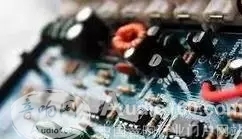
The adjustment of the equalizer is also crucial. The frequency equalizer is set to compensate for various defects in the indoor sound field and the uneven frequency of the speakers. It should be debugged with an actual spectrum analyzer or with other instruments. The transmission frequency characteristics after debugging should be relatively flat within a certain range. Many tuners who do not have audio knowledge are free to debug, and even quite a few people raise the high-frequency and low-frequency parts of the equalizer too high to form a "V" shape. If these frequencies are raised by more than 10 dB compared to the mid-range frequency (the equalizer adjustment is generally 12 dB), not only the phase distortion caused by the equalizer will seriously stain the music sound, but also the acoustic tweeter. Burned, this kind of situation is also the main reason for burning the speaker. Of course, the design of the sound system should be based on the actual situation, such as the size of the venue, use, sound conditions, etc., based on the actual conditions of use to determine the maximum continuous sound pressure level, and then determine the maximum SPL value of the speaker.
4, the volume adjustment
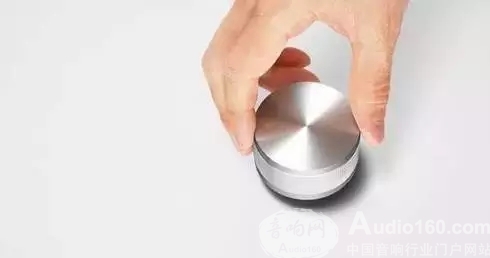
Many users set the attenuator of the power amplifier to -6dB, -10dB, which is 70%-80% of the volume knob. Even in the general position, increase the mixer input to achieve the appropriate volume, which means power. The amplifier has a margin, and the speaker is safe. In fact, this is also wrong. The attenuation knob of the power amplifier attenuates the input signal. If the input of the power amplifier is attenuated by 6dB, it means that to maintain the same volume, the mixer or the front stage must output 6dB more, the voltage is 1 times higher, and the input is The dynamic headroom, commonly known as the "head space", will be cut in half. At this time, if there is a sudden large signal, the mixer output will be overloaded 6dB earlier, and the clipping waveform will appear. Although the amplifier is not overloaded, the input is a clipped waveform, and the high-pitched component is too heavy. Not only the high-pitched distortion, but also the tweeter may burn out.
to sum up
An important reason for the speaker to burn the tweeter is that the power of the power amplifier is too small, not too large. The signal sent by the power amplifier is the clipping signal, which causes damage to the speaker. Therefore, when configuring the sound, it is necessary to establish a correct understanding. It is necessary to use the "big horse trolley" scheme to prevent the power amplifier from sending the amplitude-cutting signal and damaging the high- and mid-range speaker units. In the design of the sound system, the design power of the power amplifier and the sound should be matched with the above principles. In the actual operation, the equipment of each link should be used reasonably, so as to protect the equipment and achieve the best effect of the sound system.
Flat Ethernet Cable with two RJ45 connectors on each end. Cat8 Ethernet Cable is the highest level in Network Cable territory. And all cat8 cable are backward compatible with CAT7 Ethernet Cable and CAT6 Ethernet Cable as well as CAT5E Ethernet Cable. Standard RJ45 Lan Cable protect against EMI/RFI interference, accurate data transfer and reliability
Range of application-perfect for network adapters, Hubs, Routers, DSL/Cable Modems, PS3, PS4, X-box, patch panels and other high performance networking applications.
Flat Patch Cable include CAT8 Flat Network Cable , CAT7 flat network cable, CAT6 flat network cable, CAT5E flat network cable.
CAT8 flat Patch Cable as below:
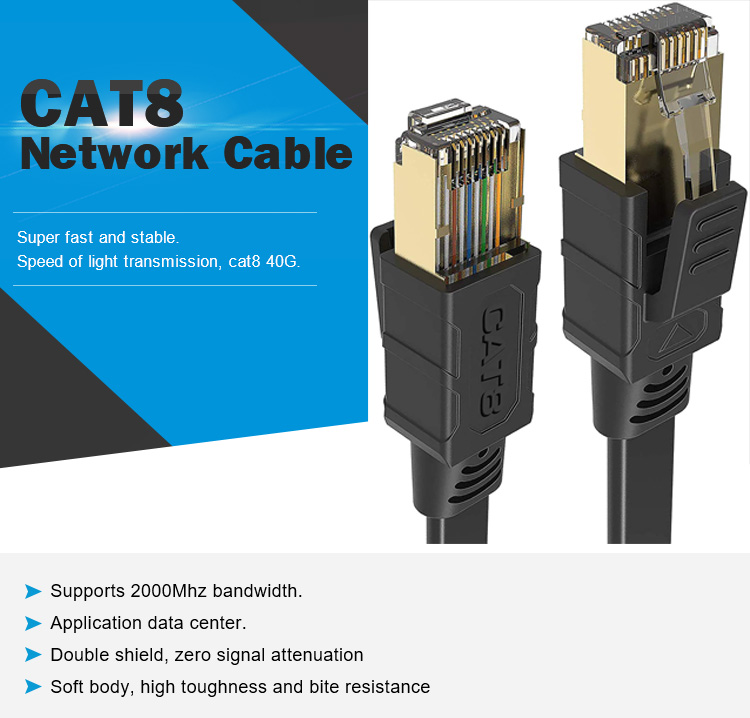
Product Information:
1. Frequency - 2000 MHz
2. Transmission Speed - 40 GB
3. Available Length - 0.5m~20m
4. Connectors - Gold Plated RJ45 or Nickel Plated RJ45
5. Condcutor- 26AWG (America wire gague) or 28AWG or 30AWG
6. Cable Construction - Shielded
7. Jacket- PVC
8. Install - Used indoor, in-wall and in the ceiling
9. Different color and different model for your choice.
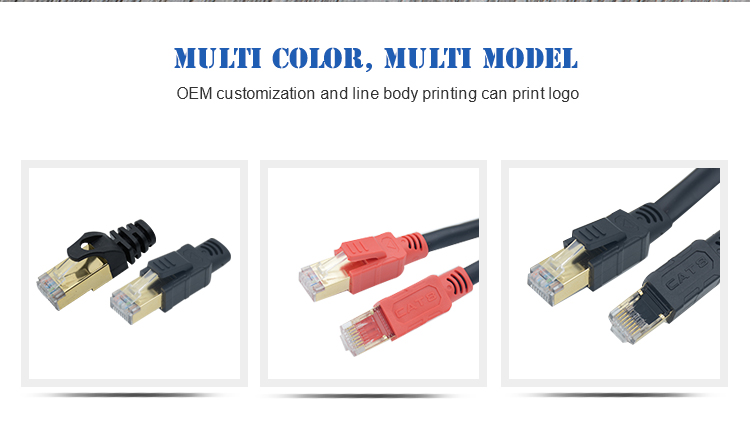
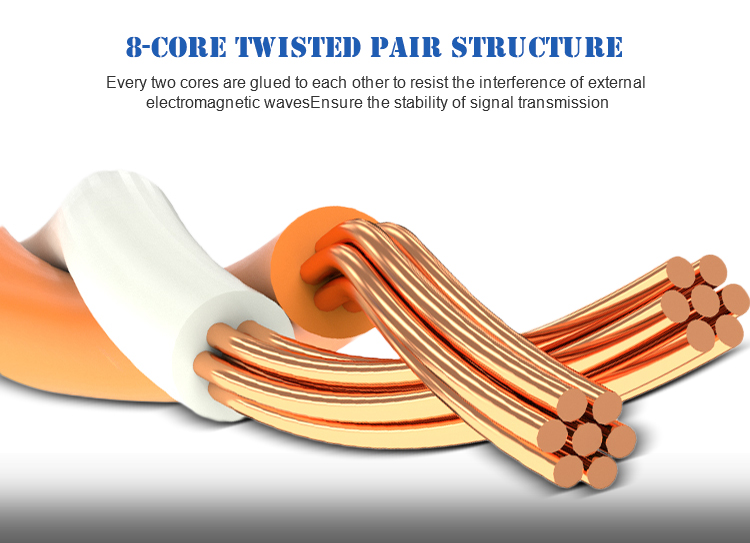
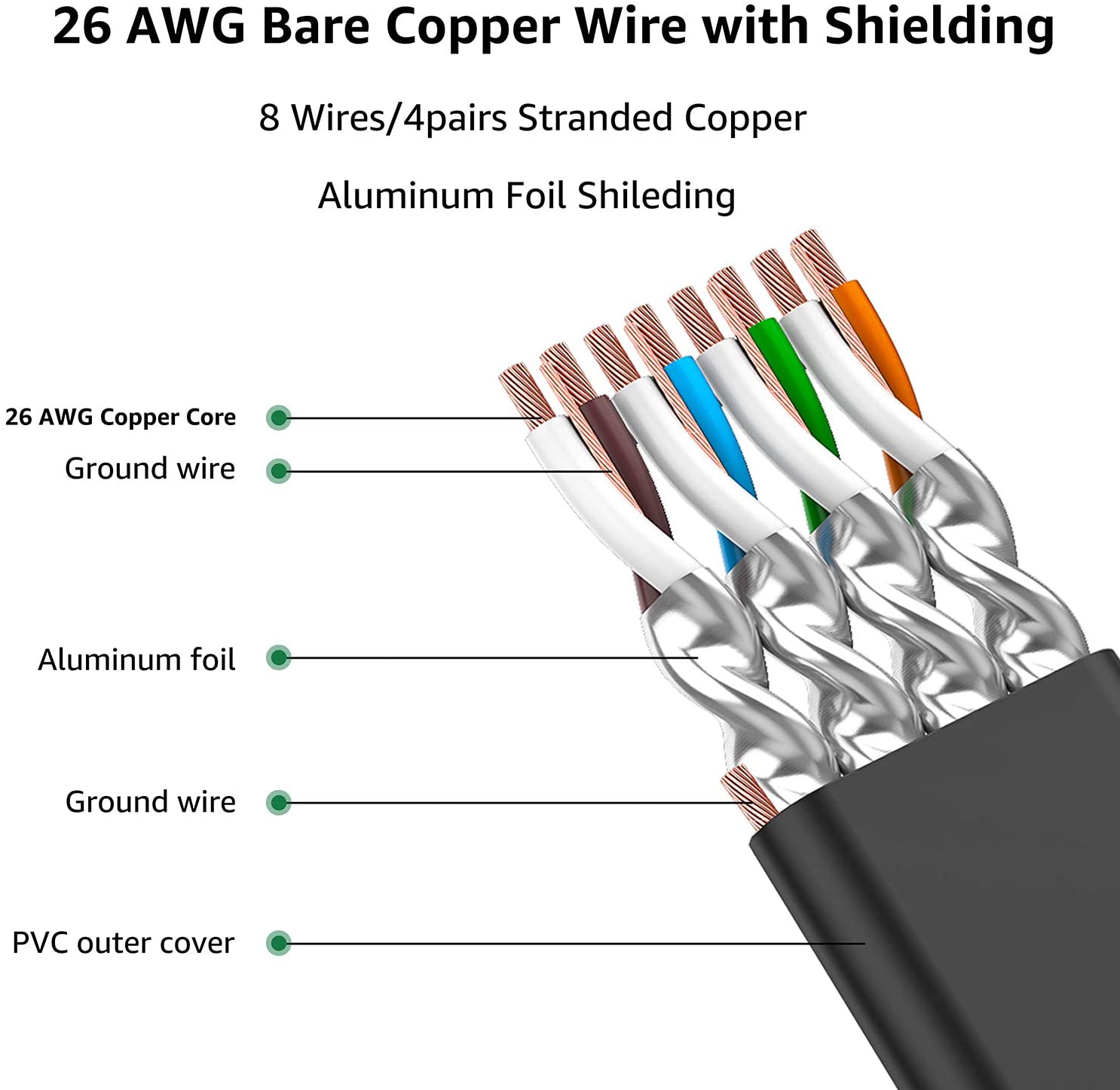
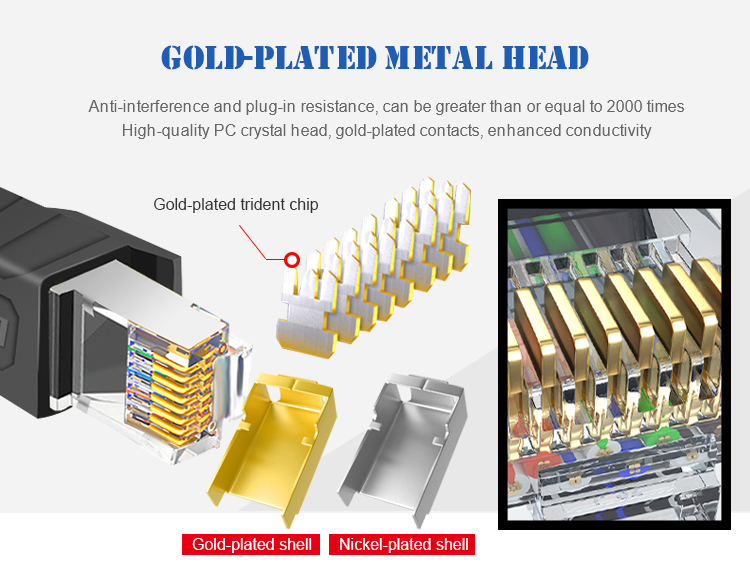
The unique Flat Cable shape allows for a cleaner and safer installation. You can easily and seamlessly make the cable run along walls, follow edges&corners or even make it completely invisible by sliding it under a carpet.
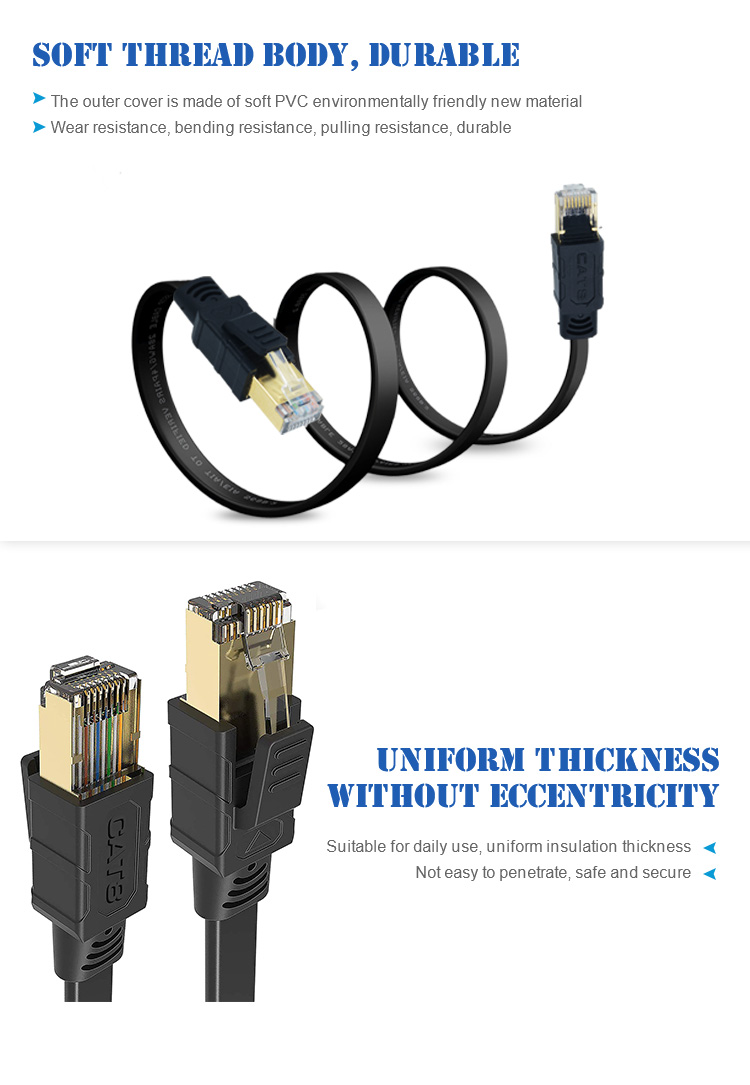
Applications: Computer, Router, TV, Interchanger, Concentrator, ADSL, Set-top box And So on.


Cat8 Flat Ethernet Cable,Flat Cat8 Cable,Flat Network Cable,Cat8 Ethernet Cable Flat
Shenzhen Kingwire Electronics Co., Ltd. , https://www.kingwires.com
